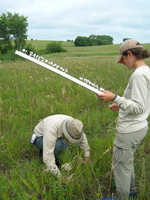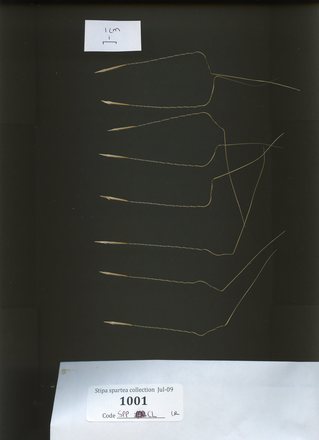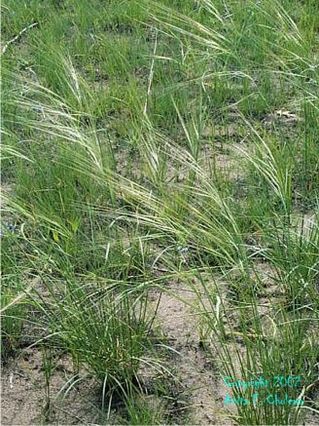And while I’m back visiting the field blog, here are a handful of photos from the Stipa planting at the end of the summer.
|
||||
|
As per a request from Daniel, here is a presentation I gave to Team Echinacea way back at the beginning of the summer. Enjoy reliving the magic! Just a quick note to say that Stipa planting was completed by lunch on Wednesday. We were able to plant the vast majority of seeds where they were randomly assigned in the CG, 10 cm north of existing Echinacea positions on the whole meter throughout the garden. I think only two seeds were not planted at all; one was lost off the board and one was missing its awn and ID sticker. About a dozen seeds had to be assigned new locations, either because there was a hole or a rock in the way or because the plant/staple/can’t find flag that we were measuring from could not be located. Not bad! To assign new random positions, I simply grabbed an ID sticker from the sheet of leftover, unused positions, removed the old sticker, stuck the new and marched around the garden planting the last of my legacy to the Echinacea project. The final task will be to replace the can’t find flags that are associated with a Stipa seed with short pins. Hopefully, this will up the chances of finding seedlings next summer. To this end, we also put a toothpick 1 cm north of every seed. Best of luck to the crew put to this test! I’m about half-way through scanning Stipa seeds and organizing them for planting, and may have underestimated how many we have! I thought we’d have approximately 6 seeds per maternal plant and, if we collected from 400 maternal plants in the field, that’s 2400 seeds. Stuart picked ~2600 positions to plant in. Plenty, right? Well, after assigning positions to seeds from 208 plants, I have 214 to go. That means I underestimated the number of plants we collected from. Also, we’re averaging more like 6.4 seeds per maternal plant. Another underestimation. I think we need another 200 positions to comfortably assign all seeds to their new homes the garden. What do you think? Below is one of the scans of Stipa seeds collected from Douglas County. This particular set of seeds was collected from a plant at Staffenson Prairie Preserve. The seeds themselves are pointed towards the left side of the image, and extending from them are the long awns that give Stipa it’s common name (porcupine grass). At this stage, they look less like quills, though, because they have dried and started to coil (click on the picture to see it full resolution and you can actually observe the coils and lots of other neat features of the seed, like hair and a dagger tip!). Out in nature, the coiling action would allow the seeds to attach to a disperser or to drill themselves into the ground in preparation for overwintering and germinating the next spring. We’ll be scanning all of the seeds we collected (an estimated 3,000+ seeds from 431 plants), making digital measurements of seed length and width, and planting around 2,500 of them interspersed with Echinacea in the common garden. For some time, the powers that be on the Echinacea project have thought, “Wouldn’t it be nice to compare all we’ve learned from coneflower with another important native component of the prairie?” Well, this summer, study of habitat fragmentation and its ecological and evolutionary impacts broadens to include an additional species. And the winner is … Stipa spartea aka porcupine grass! The time is right now to collect the seed, which will be sown into the common garden later this summer. Here’s a link to a page from the Bell Museum of Natural History about Stipa spartea. Below, you will find the sampling protocol that Greg and I used to collect seeds from Staffenson Prairie this afternoon. Stuart may have thoughts to add and the strategy might change a bit as we run into the reality of different Stipa remnant populations. In addition to remnants, we will also be collecting seeds from roadside transects. Expect that challenge to be met later next week. Can you match up the Team Echinacea member with his or her handle, that is, the alias used over the walkie talkie radios? Answers to be posted later this week … The real deal The clever handle Here is some information passed on to me by Megan Jensen about the breeding systems of common native prairie species. Notice, there are many holes! Hopefully, this sort of information will assist us in moving to a new, exciting phase of the Echinacea project … which everyone will have to wait just a little longer to hear about. Have I piqued your interest? |
||||
|
© 2025 The Echinacea Project - All Rights Reserved - Log in Powered by WordPress & Atahualpa |
||||







